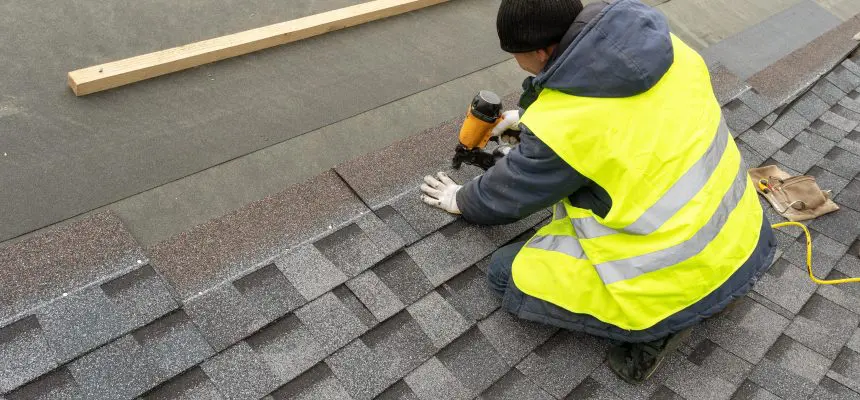While it’s true that the primary function of all roofs is the same: to provide shelter and protection, not all roofs are created equal. There are several differences between commercial and residential roofing that make each one unique, including:
- Design
- Materials
- Maintenance
- Cost/Installation
The primary difference between commercial versus residential roofing is the slope, scale, and scope of work. If you live in the northeast, here are some things you need to know about the differences between commercial versus residential roofing.
4 Differences between Commercial Roofing and Residential Roofing
Design
The primary difference between commercial versus residential roofing is design. In general, residential roofs are designed to fit or create a certain aesthetic. On the other hand, a commercial roof is designed for functionality.
Typically, a commercial roof has a very low slope, and in some cases, is flat. Also, a commercial roof is much larger than a residential roof. A flat roof is helpful for business owners because it helps utilize space within the building. Additionally, several features can factor into the commercial roof design, including external piping, airflow systems, smokestacks, and more.
On the other hand, a residential roof is typically pitched, meaning it has a slope. The slope creates curb appeal and functionality/protection against harsh weather conditions. It is much easier to maintain, repair, and replace a residential roof when you consider its design.
Materials
The second difference between commercial versus residential roofs is the materials used.
Options for residential roofing materials include:
- Wood shakes/shingles
- Asphalt shingles
- Concrete tile roofing
- Luxury asphalt shingles
- Clay tiles
- Copper roofing
Due to their mid-to high-pitch, the “classic” materials such as those listed here are used for residential properties. Typically, a residential roof requires a layer of plywood to create an underlayment before installing any of the above materials.
A commercial roof is typically made of rubber membranes and other systems, including tar and gravel systems or built-up roofing. EPDM, or ethylene propylene diene terpolymer, also known as “rubber roof,” is common for commercial applications. This is a form of built-up roofing. The number of layers depends on the type of roof being installed and involves insulation, decking, and protective and/or reflective coatings.
Maintenance
The third difference between commercial versus residential roofs is the required maintenance. Both types of roofs require attention.
Commercial roof maintenance is a bit more demanding because of its large footprint and flat surface. A flat roof requires more maintenance, as leaks can occur if not properly cared for. This is especially true in areas that experience high rains or snow. You should schedule regular roof inspections to prevent this from happening. Luckily, the flat surface makes it easier to inspect a commercial roof than a residential roof.
The slope of a residential roof makes it easier for debris, rain, and snow to flow off and away from the roof. Residential roofs still need maintenance, but it is not as demanding as commercial roofs, and they are easy to service.
Both types of roofs need maintenance, but their needs differ. No matter what type of roof you have, you need to ensure gutters are kept clean, especially during fall and winter, when falling leaves and ice damming is possible.
Cost/Installation
The fourth and final difference between commercial versus residential roofs that we’ll look at is cost/installation.
Due to the size of a commercial roof, there are several factors you must keep in mind during installation. The installation of a commercial roof is done in sections, and the contractor must pay attention to the weight of the equipment that will be kept on the roof. Things such as square footage, protective equipment, materials, and advanced tools are all factored into the cost of a commercial roof. These factors cause the price of a commercial roof to be higher than the cost of a residential roof.
On the other hand, a residential roof is much smaller, making it cost less and easier to install. In most cases, a residential roof installation can be completed in a few days, and a commercial roof tends to take a bit longer. Commercial roofing typically requires specialized equipment as well as different installation techniques.
Conclusion
If your home or business is located in new York, New Jersey, Or Connecticut, A&J Reliable has covered all of your commercial roofing and residential roofing needs. We have experts specializing in whatever you need and can help you understand the differences between commercial versus residential roofs. We can install and help you maintain whatever it is you need. Be sure to call us for all of your roofing needs.





